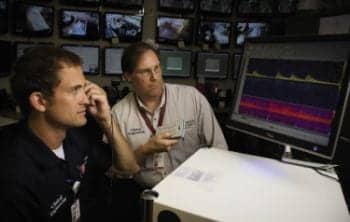They say everything’s bigger in Texas, and this axiom certainly applies to Texas Children’s Hospital. As the nation’s largest children’s hospital, the Houston-based Texas Children’s Hospital houses 639 beds—as well as one of the biggest biomed departments in the United States. Below, John Weimert, director of biomedical engineering at Texas Children’s Hospital, sits down with 24×7 Magazine to discuss the workload the department handles and how his team has taken a proactive approach to staffing.
24×7 Magazine: Can you please tell us a little bit about your department?
John Weimert: Biomedical engineering runs a 24/7 operation for medical equipment management services for more than 46,800 devices. Service offerings include in-house repair and preventive maintenance, contract management, project equipment planning, technology evaluation and capital equipment planning, and procurement. Equipment service is provided by 54 biomedical technicians who work in groups focused on a particular technology type, such as imaging devices or physiologic monitoring [equipment]. Our department leadership consists of six managers, two assistant directors, and a department director.
24×7: How has Texas Children’s Hospital’s biomed department evolved recently and how do you expect it to evolve even more in the future?
Weimert: We have recently completed a department reorganization to put the department in a better position to manage technologies as Texas Children’s expands outward into the community. Specifically, we have added an assistant director for community services. This leader has responsibility for the equipment management program beyond Texas Children’s main campus in the Texas Medical Center. Community hospitals, health centers, and specialty clinics fall under this leader’s [jurisdiction].
An additional assistant director has responsibility for equipment management at the main campus. Texas Children’s growth in the community has impacted how we service medical equipment beyond the main campus. Also, a different service model is used at remote sites, forcing changes in technical training and skills development as well.
24×7: Given the vast size of Texas Children’s Hospital and the sensitive nature of your patients, what steps is your department taking to thwart cyberattacks?
Weimert: Biomedical engineering and information services security leadership collaborate through several formalized groups: the Information Security group, Medical Device Management and Cybersecurity, and the Information Technology Risk Management Committee. These collaborative meetings help the leadership of both departments to remain in sync on all issues regarding medical device risk, security, and medical network integrity.
24×7: Cyber concerns aside, what do you believe are some of the other key issues currently affecting the HTM field?
Weimert: Technical training and its associated cost, managing vendors and the rising cost of service contracts, as well as finding the right talent and [developing it].
24×7: Let’s talk about your latter point: finding and attracting the right people. What are some steps your team is taking to ensure a strong pipeline of talent at Texas Children’s Hospital?
Weimert: We build strong relationships with academic institutions, engage as a member of college advisory boards, and constantly develop our student internship program. Also, we have good hiring practices at the entry level and provide technical development and competency assessment. Finally, we promote from within, developing the talent.
24×7: Very interesting! Can you please discuss your department’s relationships with academic institutions in greater detail?
Weimert: The biomedical engineering department partners with several academic institutions to help develop curriculum, and ensure that biomedical engineering students are being prepared for the real world of biomedical engineering as it’s practiced in a large hospital setting. Graduating students are hosted for a 320-hour internship, a time in which they are instructed in the accepted practices of medical equipment servicing. Many of these student interns are hired to fill entry-level positions, and this has proven to be an extremely successful program over time.





